Winemaking, Explained: How World-Class Wines Go From the Vine to the Bottle

Every piece of the winemaking puzzle involves a series of decisions.
It’s said that great wine is made in the vineyard. In reality, it certainly starts there, but winemaking is a process that involves many steps in both the field and the winery. There are a lot of decisions made along the way, and each one of them affects the taste, texture and quality of the wine. We’ve previously looked at fermentation and blending in depth, but for a broader approach we recently spoke with winemakers about some of the many processes involved in the making of our favorite beverage.
More from Robb Report
Home of the Week: This $35 Million Napa Valley Estate Has Its Own 22-Acre Vineyard
Wine Fermentation, Explained: How the Process Affects the Flavor and Texture of Your Vino
Unlike Most Sectors, the Wine Industry Actually Grew During the Pandemic
In the Vineyard
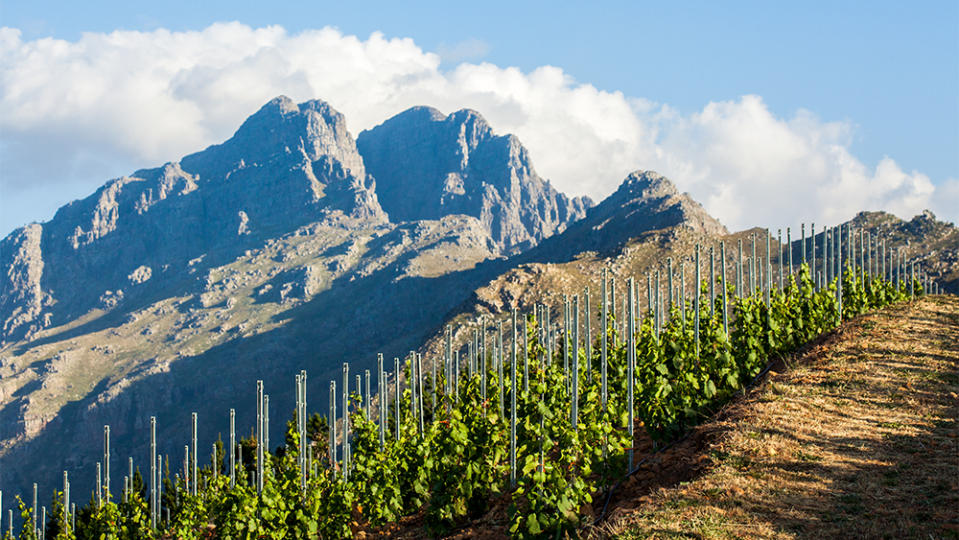
Unfortunately, grapes do not simply grow themselves. The vineyard is an active site year-round, with pruning starting in January when vines are dormant (in the northern hemisphere) in anticipation of warmer weather and bud break in the early spring. As grapes grow throughout the summer and into early fall, agronomists and enologists determine the perfect moment of ripeness for picking, but before that they are determining which plots and grapes will go into which wine. Piero Mastroberardino, 10th generation winemaker and president of Mastroberardino winery in Campania, Italy, told Robb Report, “It’s important to start from the vineyard approach. In the vineyards we have two main options: the classical approach focused on blending grapes of the same variety, coming from different sites of an appellation, in order to present . . . the best expression of its territory of origin. Then there is a cru approach, that is the research for the best expression of a specific site within an appellation area, i.e., a more restricted part of an appellation expressing some typical characters.”
Working with local grape Aglianico, Mastroberardino uses the single vineyard approach in his Historia Taurasi Riserva DOCG or Radici Taurasi Riserva DOCG, but blends grapes from several different family vineyards for the newly released Stilema Taurasi Riserva DOCG.
Fermentation
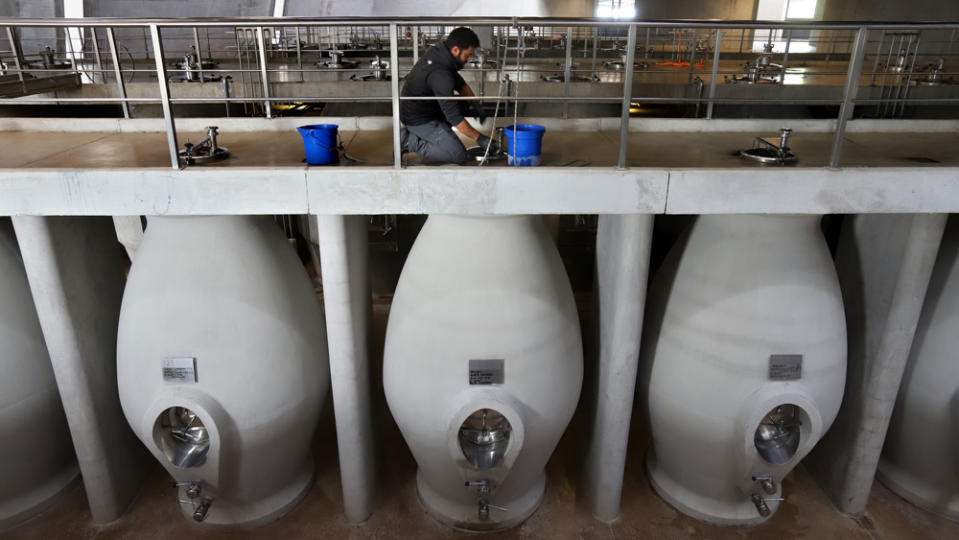
We have previously discussed fermentation in more detail. In brief, yeast converts grape sugar to alcohol, and the end result is wine. The most common yeast used is Saccharomyces cerevisiae, but there are more than 700 strains of that in existence. Some winemakers inoculate their grapes with specific strains of yeast to achieve a controlled fermentation, which may occur more in mass-produced than in small batch wines. Others, however, only use natural or indigenous yeast that is grows on grape skins. As Eva Reh, owner of Domaine Bertagna in Burgundy explained, “We use indigenous yeasts because they are the natural yeasts of the fruit, which allows you to remain as close as possible to nature as you work the wine. There are enough natural yeasts in the fruits to avoid having to use oenological products.”
Saskia Prüm, Lead Winemaker and Proprietor of SA Prüm, a top-notch Riesling producer in Mosel, Germany, went into greater detail, telling Robb Report, “For us it’s important that the wine lover can detect the signature of the vineyard in every glass of wine. We use natural yeast fermentation to better express the pure characteristic of the Riesling and its origin. Of course, this type of fermentation asks for more control during the fermentation process because it’s riskier and takes a longer time. The population of the yeast cells is very limited in the juice and needs to develop before the fermentation can start, and then of course, you don’t know which types of yeast are active. This increases the risk that the fermentation goes on the ‘wrong direction.’”
Prüm further elucidated on the use of native yeast in her Grosses Gewächs, a term used to designate the highest quality dry white wines. “It can happen that a wine is still fermenting after a year, especially because at the end of the fermentation process, the higher alcohol levels and cooler temperatures makes it hard for the yeasts to continue their work. But we have the patience to wait until nature decides that the wine is ready. With cultivated yeast, we can see that the wines show some kind of uniformity which doesn’t give them the chance to show their real identity.”
Blending
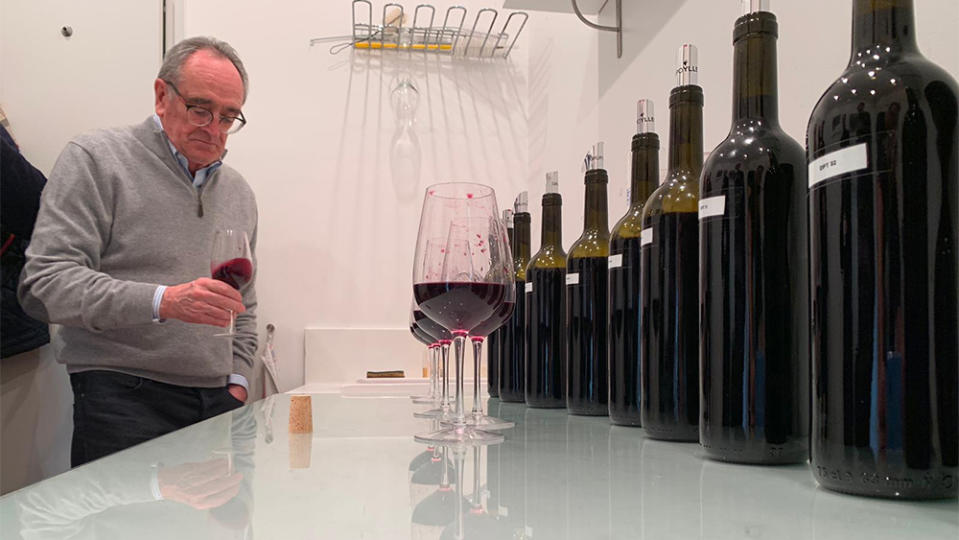
While we have also examined blending on a larger scale, Andrea Lonardi, director of operations and winemaking at Cantine Bertani in Valpolicella, Italy, may have put it best when he stated, “Blending in Valpolicella is like being a director of an orchestra.” He continued, “In order to play the right soul of the Valpolicella terroir you need to balance two things: the different grape varieties and the proportion of each.”
Echoing his countryman Piero Mastroberardino, Lonardi brought it back to the vineyard, elucidating, “Ninety to 95 percent of our blend is Corvina from white limestone and volcanic soils. The Corvina from white limestone brings morello cherry and sweet spices with intense white pepper hints in combination with high vivid acidity and firm masculine tannins. Corvina from basaltic soils is more feminine. It gives pale color, strawberry and a touch of smoky notes. In the palate the wines from this selection are lighter with silky tannins and very long mineral length. In addition, we still use a small proportion of Rondinella that is less elegant and refined than Corvina. But Rondinella brings a lovely floral note that during aging evolves in dried rose petal hints. Making the blend is a matter of finding the right balance and try to represent the soul and the memories of the vintage.”
Barrel Fermentation and Aging
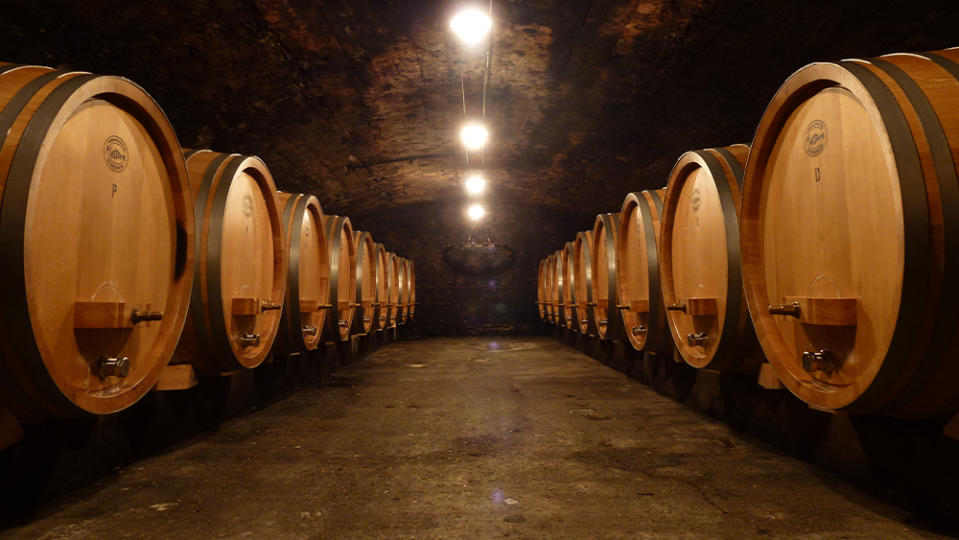
Fermenting in barrel adds flavor from the wood as well as a buttery or creamy texture, while aging in wood after fermentation will bring tannins and flavors of vanilla, baking spices, coconut, or coffee. The three main sources of oak for barrels are France, the United States and Hungary, and each has its own qualities. The species of oak grown in France is known to give more velvety texture and stronger spice notes, while American oak is noted for imparting creamier mouthfeel and stronger flavors of vanilla and coconut. Another variable is toast level: as barrels are made, they are set over open fire and “toasted” to the desired level. Depending on the winemaker’s wishes, barrels can be toasted to levels that include light, medium, medium plus or heavy.
Gonzalo Iturriaga, technical director at Vega Sicilia in Ribera del Duero, Spain, which has its own barrel making facility, informed Robb Report that he uses medium to high toast levels,“because our vineyards give fruit with a lot of tension and freshness, and we are looking to give the wines more juiciness and roundness.” He uses different toast levels for Vega Sicilia Unico and Valbuena, pointing out, “The levels of toast for both wines depend on the vintage. In cool vintages we use more toast and in warm vintages less toast and we also reduce the percentage of barrel because in warmer vintages you can end up with a wine with too much oak. In general, we use more medium-high toast for Valbuena and higher toasts for Unico. The type of oak is also important parcels with grainy tannins we use more American oak to give more roundness.”
Batonnage
Many winemakers age their wines on the lees, the spent yeast cells and bits of grape skins and seeds that fall to the bottom of the barrel. In order to bring some of the texture, aroma and flavor from the lees back into the wine, they engage in a practice known as batonnage, which is stirring the lees with a special baton. We have also seen winemakers reach into open topped barrels and stir the lees with their hands. Winemaker Bibi Graetzputs this technique into use for his Colore and Testamatta, which are made with Sangiovese grown in high altitude vineyards in Tuscany. He pointed out to Robb Report, “We don’t do bleeding or concentration during fermentation, and we only use old oak barrels in order to not impact the wines with external aromas. Batonnage— played carefully and in moderation—increases the varietal aromas and elevates the Sangiovese strengths. The fine lees enhance its purity and give it a kaleidoscope of different nuances.”
Bottle Aging
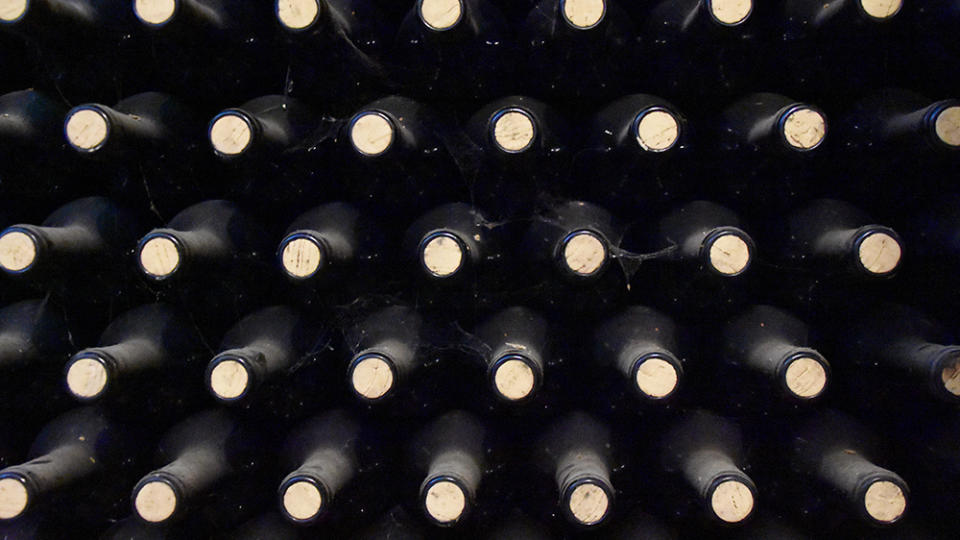
While many European wine regions such as Rioja, Barolo and Chianti require wine to be aged in bottle for a certain amount of time before release, winemakers may also decide on this practice themselves so that the wines can settle and mellow out before they are sold to consumers. Guillermo de Aranzabal, sixth generation family member and president of La Rioja Alta in Rioja, Spain, explained the practice: “Wine in bottle softens and rounds because the tannins polymerize and become silkier and more pleasant. it also changes the color of the wine. Brown tones appear, and with a lot of time, iodine-like tones. The wine is also softened by integrating all the components of the wine such as acids and alcohol. Finally, the aromas of bottle aging appear, making it more powerful, complex and elegant. But you also must be careful. Bottle aging is not positive for all wines. Some wines with a long time in the bottle lose quality because they have too much evolution and even oxidation.”
Speaking about La Rioja Alta 2010 Gran Reserva 890, which was bottled in 2017 and recently released, de Aranzabal told Robb Report, “This time in the bottle makes the wine rounder and more balanced, with very complex aromas reminiscent of cherry jam, black plum compote, tobacco leaf, cinnamon, vanilla, pepper, powdered chocolate. The tannins become silkier, very pleasant, and the finish becomes very complex and elegant.”
Best of Robb Report
Why a Heritage Turkey Is the Best Thanksgiving Bird—and How to Get One
The 10 Best Wines to Pair With Steak, From Cabernet to Malbec
Sign up for Robb Report's Newsletter. For the latest news, follow us on Facebook, Twitter, and Instagram.

